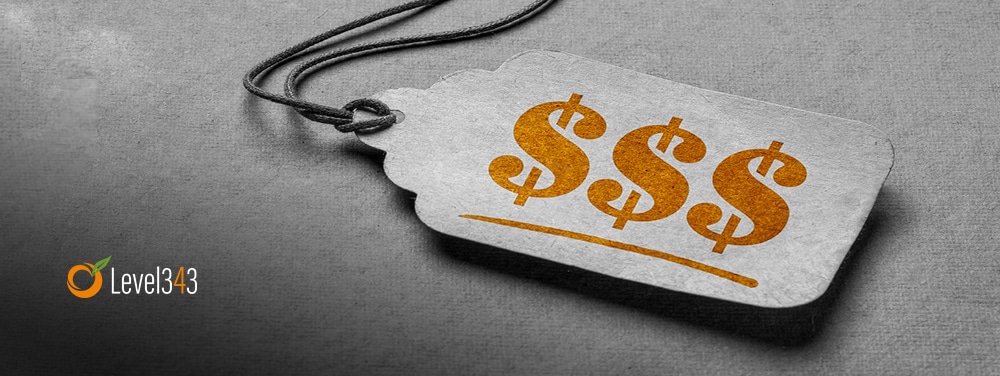What is price theory? If you were faced with two identical items that were listed at two vastly different prices, what impression would you have with regard to one that was extremely under or overpriced? Would you assume that the underpriced item was defective or that the higher price was an attempt at gouging? These questions have actually been studied, and you may be surprised by the answer.
Price theory is a psychological concept that analyzes how cost influences the behavior of consumers, suppliers, and resource holders. In buyer psychology, you learn that even a price change to the most infinitesimal degree can make the difference between a sale and a pass.
For example, companies often list the price of an item for one penny less than a whole dollar amount. You might think that saving one cent is small incentive to make a purchase, but there’s a psychology behind this trick.
If you’re in the mood to over-analyze, you won’t see much difference between $9.99 and $10. However, your brain automatically registers the lower number 9 as a reduced cost and decides it’s a good value. This little difference can lead to a sale more often than you think. More sales mean higher profits, and this tip has a great ROI because it involves virtually no investment of time or money.
Where Are You Missing the Big Pricing Picture?
Most business owners will agree in the basic premise of price theory. They know how they price their products has a great deal of influence over their marketability and demand. However, many overlook how the way they price an item affects consumption or how – and how often – that item is utilized.
If you don’t think that matters, you’re missing the big picture. You see, if an item isn’t consumed, it isn’t replaced or renewed.
We see this concept at play in how ongoing services and subscriptions are advertised and priced. A yearly membership with a fee of $500 is unlikely to be renewed because once that fee is paid, the service is out of mind. If you change the pricing structure to break it down into monthly installments of $50, that service is more likely to be used and the membership renewed even though the total price is higher.
Why? Because $50 is much less than $500, and that’s what the mind remembers. Since the customer is paying that amount every month, they have a regular reminder to act.
Would you rather purchase web hosting that’s only $2.99 per month (for three years) or pay $11.99 per month on pay-as-you-go plan? The price of the former is higher overall, but the monthly plan is nine dollars more.
However, the person paying a higher monthly rate for a consumable product or service might be tempted to use the service more because they’ve invested more for access. In most cases, higher consumption translates to higher sales.
4 Pricing Strategies Based on Price Theory That will Increase Your Profits
1. Learn the Art of Innumeracy
This is s trick of wording your pricing so that it’s more appealing. For example, you could advertise that you’re offering a product at 50 percent off or that customers can “Buy one, get one free”. The majority of the time, customers will choose the later. Why? They’re both essentially the same deal. But, with the second offer, customers believe they are getting added value.
You can check this one out yourself through split testing to determine which wording gets more results.
2. Make Your Pricing Time-Sensitive
No one wants to miss out on a good deal. By making your pricing time-sensitive, you leverage fear of missing out (FOMO) and spur the consumer to act fast. Beware of deploying black hat practices, some of which (such as bait-and-switch) are illegal. There’s also the old artificial price drop (which is usually just the regular price) in advance of a price increase. Not illegal, but savvy shoppers will notice.
Another common version of time-sensitive pricing is the “One Day Only” sales advertisement. The items are usually that same price everyday, but the ad copy leads people to believe that they need to shop on that day to get a deal.
3. Use a Little Charm
We discussed this method a little before. Charm pricing is the act of adding a specific number to the end of the price to subconsciously inspire a customer to act, and it’s backed by research from MIT and the University of Chicago.
During this study, they discovered that product prices ending in the number nine increased consumer demand for those products. They also learned that prices ending in 0 were perceived by customers to be high-end products or luxury items. The next time you’re shopping for diamonds or a sports car as opposed to a family vehicle, a take note of the list price.
4. Alter the Font
Have you ever noticed a trend where the first two numbers of a price are in a larger font than the numbers appearing after the decimal? This is another psychological trick that forces consumers to pay more attention to the larger fonts and disregard the spare change at the end. In another version, prices ending in 00 have the last two numbers left off altogether. Seeing $15 versus $15.00 may seem irrelevant, but to the eyes of the customer, the first price is lower due to its having fewer numbers.
Getting the Pricing Right
Remember, these tactics only work if your products are properly priced in the first place. Start with the basics of setting prices based on elements like market value and consumer demand, and then put these strategies into place for an added revenue boost.
I’ve been building Level343 for more than 20 years, and I also co-owned a successful offline marketing company prior to that. One of the most difficult tasks was knowing what to charge clients for our services. Charging too little just screams inexperienced and substandard. Too high, and you’re in danger of pricing yourself right out of the market.
First of all, begin by understanding your audience. You’ll also want to conduct thorough market research to determine what comparable businesses charge for the same service. Unless you have an online only storefront, take into consideration that prices can vary by location. Analyze the market for the areas you serve.
Next, you’ll want to calculate your total monthly expenses to determine how much you’ll need to make to break even. Try to predict sales volume over the coming year. Set your price for whatever percentage over that amount will help you meet your revenue goals monthly, by quarter, and annually.
Final Thoughts
Price theory works. Right or wrong, people make assumptions about the quality and value of a good or service by how much it costs. It’s also what drives them to buy. Through strategic pricing that’s data-driven and backed by research, you can increase your sales and widen your profit margin with relatively little effort.
Learn more about marketing magic by contacting a branding specialist at Level343. We have proven strategic marketing solutions for businesses like yours.



































